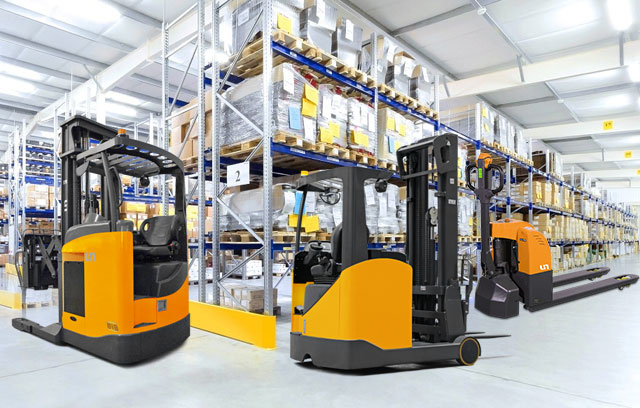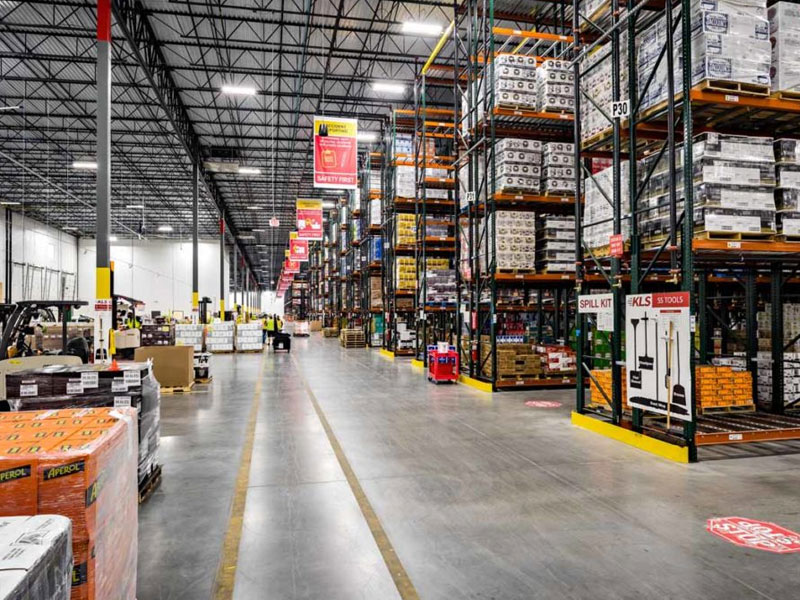electric forklifts often incorporate various energy-saving features to enhance efficiency and contribute to sustainable operation. These features are designed to optimize energy consumption, extend battery life, and reduce overall operating costs. Here are some common energy-saving features found in electric forklifts:
Regenerative Braking:
Regenerative braking systems capture and store energy during braking, converting it back into electrical power to recharge the battery. This feature helps to improve overall energy efficiency.
Energy-Optimized Drive Systems:
Some electric forklifts are equipped with energy-optimized drive systems that adjust power delivery based on the load and operating conditions, minimizing unnecessary energy consumption.
Variable Speed Drive:
Variable speed drives allow for precise control over the forklift's speed, reducing energy waste and providing smoother acceleration and deceleration.
Automatic Shut-Off:
Automatic shut-off features are designed to power down the forklift after a certain period of inactivity, preventing unnecessary energy consumption during idle times.
LED Lighting:
Upgrading to energy-efficient LED lighting systems reduces power consumption compared to traditional lighting options while providing adequate illumination in the working area.
High-Efficiency Motors:
The use of high-efficiency electric motors contributes to overall energy savings. Advanced motor technologies, such as brushless DC motors, enhance efficiency and reduce energy losses.
Smart Charging Systems:
Some electric forklifts come equipped with smart charging systems that optimize the charging process, ensuring the battery is charged efficiently and without overcharging, which can extend battery life.
Low-Energy Standby Mode:
Forklifts with low-energy standby modes reduce power consumption when the forklift is not actively engaged in lifting or moving loads.
Programmable Performance Settings:
Adjustable performance settings allow operators to customize the forklift's power output based on the specific requirements of the task, optimizing energy use.
Energy-Optimized Hydraulics:
Hydraulic systems in electric forklifts may be designed for energy efficiency, minimizing power requirements during lifting and lowering operations.
Thermal Management Systems:
Thermal management systems help regulate the temperature of the forklift's components, ensuring optimal operating conditions for the battery and other critical elements.
Telematics and Monitoring Systems:
Telematics systems provide real-time data on the forklift's performance and energy consumption. This data can be used to identify areas for improvement and optimize energy usage.
High-Efficiency Tires:
Tires with low rolling resistance contribute to energy efficiency by reducing friction and improving overall performance.
Energy Recovery Systems:
Beyond regenerative braking, some forklifts may incorporate additional energy recovery systems to capture and reuse energy during specific operational activities.
Load-Sensing Technology:
Load-sensing technology adjusts the power output of the forklift based on the weight of the load, preventing unnecessary energy consumption when lifting lighter loads.
Power-On-Demand Systems:
Power-on-demand systems supply power to specific components only when needed, reducing overall power consumption during periods of lower demand.
Efficient Cooling Systems:
Cooling systems designed for efficiency help maintain optimal operating temperatures without excessive energy use.
Eco-Mode Settings:
Some forklifts have eco-mode settings that prioritize energy efficiency, adjusting performance parameters to conserve energy during operation.
These features, when combined, contribute to the overall energy efficiency of electric forklifts, making them more sustainable and cost-effective options for material handling in various industrial settings.











 中文简体
中文简体 عربى
عربى Español
Español














